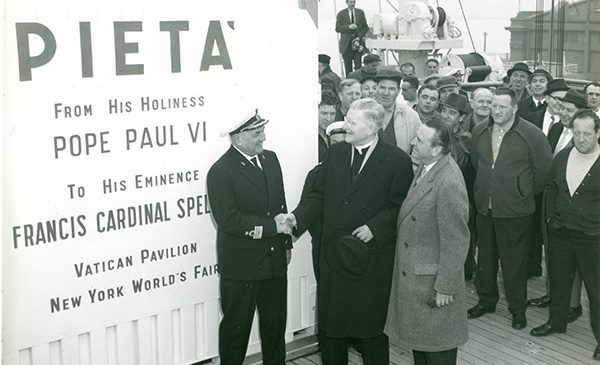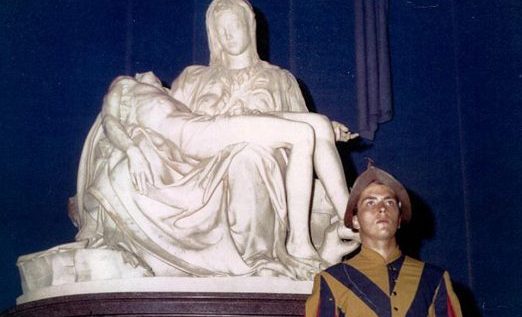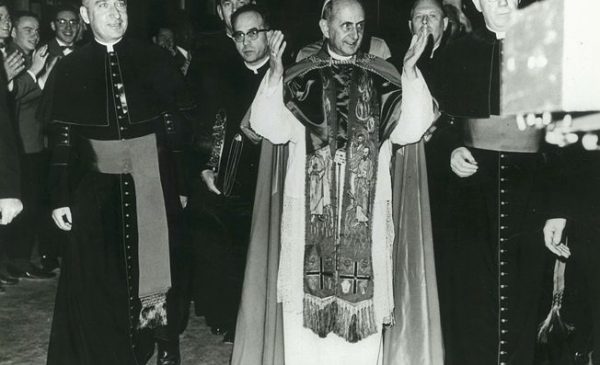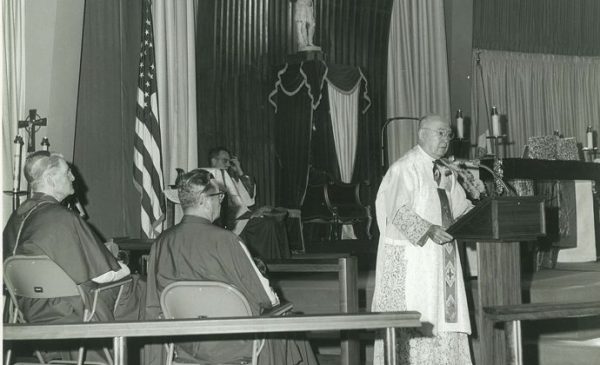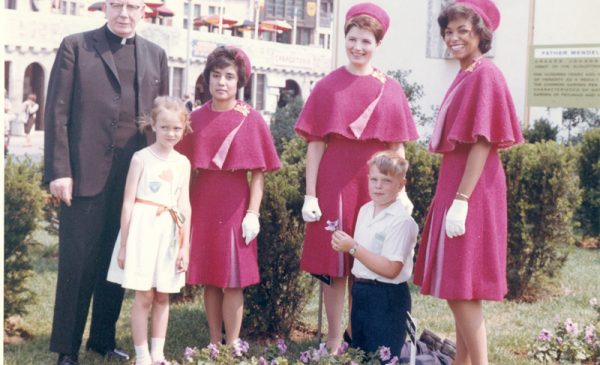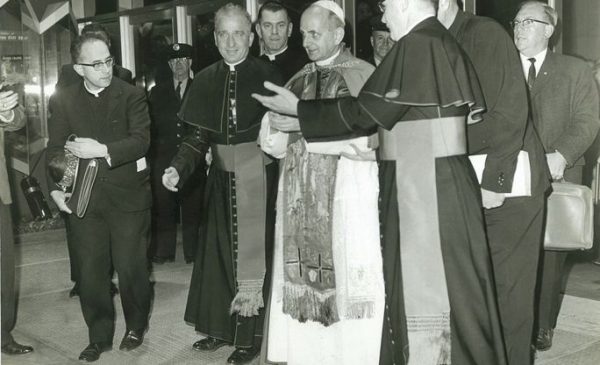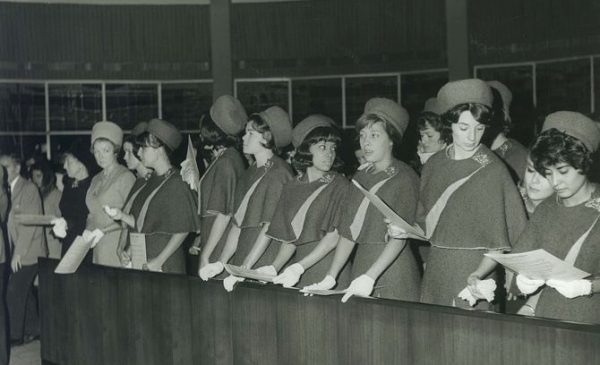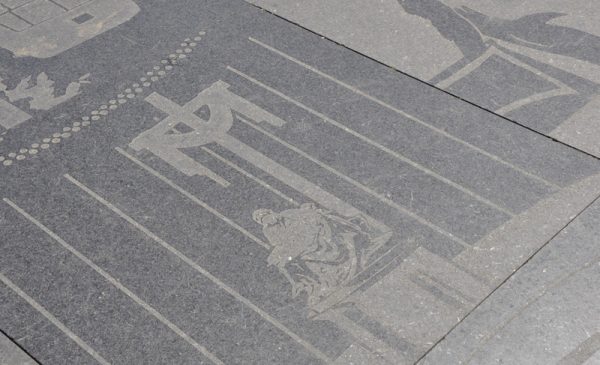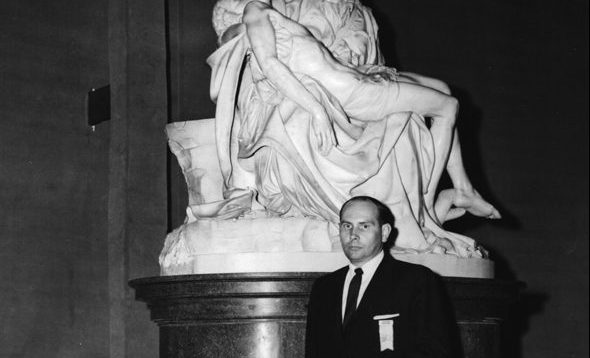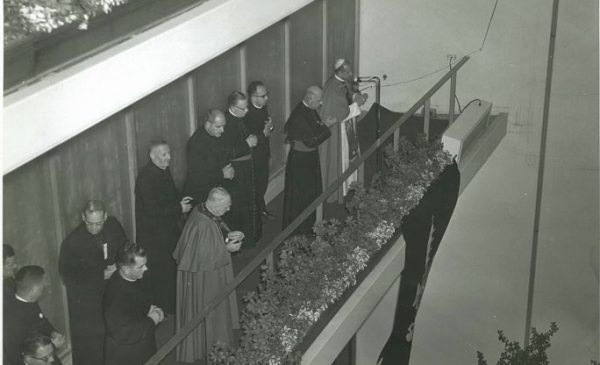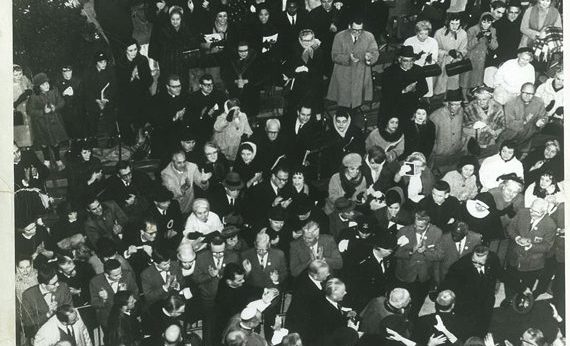A look back TO THE TIME, NEARLY 60 YEARS ago, the Diocese of Brooklyn hosted Michelangelo’s TREASURED sculpture for 18 months
WINDSOR TERRACE — Fifty-seven years ago, Michelangelo’s Pietà arrived in New York for display at the New York World’s Fair in Flushing Meadows.
It was the first, and perhaps only, time that the prized sculpture left Vatican City, and the Diocese of Brooklyn was proud to be its home for 18 months.
The Pietà, which depicts the body of Jesus taken down from the cross in the arms of his mother, Mary, entered the Port of New York through the Narrows on April 13, 1964. At the Verrazzano Bridge connecting Brooklyn and Staten Island, the Italian liner Cristoforo Columbo — carrying its treasure from the Vatican — was met by three red tug boats. One displayed a banner that read, “New York Welcomes Pietà.”
Guided by Capt. Giuseppe Soletti, the majestic ocean liner proceeded past the Statue of Liberty and up the West Side of Manhattan in the Hudson River, finally docking at W. 44th St. On hand to receive the precious cargo was Brooklyn Bishop Bryan J. McEntegart, who served as vice president of the Vatican Pavilion Corp.; Edward M. Kenny, director of purchasing and shipping of Catholic Relief Services who headed the Vatican transport teams; and Thomas Deegan, vice president of the World’s Fair.
Visibly relieved at having completed the seven-day voyage, Capt. Soletti exclaimed, “In all my 39 years at sea, these two reverend guests were my most important cargo.”
The second piece was a third-century sculpture of “The Good Shepherd” by an unknown artist.
The following day, the treasured artwork was lowered onto a derrick barge named Challenger and towed by two tug boats around the Battery and up the East River to Flushing Bay. From there, it was taken by trailer to the fairgrounds for its 18-month stay in the Vatican Pavilion.
The Pietà was packaged in a watertight case, inside a case, which was inside another case. It was surrounded by 20 barrels of Dylite (expanded plastic) beads. In case of a disaster at sea, the package was made buoyant and carried an electronic signal rescuers could use to find it. The top of the container was also painted bright orange for easy visibility.
The Pietà was completed in 1499. It was commissioned by Cardinal de Billheres, a French emissary at the Vatican, for his tomb. It first was placed in the Chapel of Santa Petronilla in old St. Peter’s Basilica and remained there for 200 years until 1699, when it was relocated to the main basilica.
Made from a single piece of Carrara marble from Tuscany, it is the only piece ever signed by Michelangelo. It is said that, after hearing another artist being acclaimed for the work, he carved his name on a sash hanging over the shoulder of the Blessed Mother. It is regarded as a significant work of the European Renaissance.
The Pietà and Vatican Pavilion were blessed at a ceremony on the Sunday before the Fair’s official opening. Bishop McEntegart and Cardinal Francis X. Spellman arrived at the dedication by aqua foil boat.
Cardinal Paolo Marella from the Vatican was the main celebrant as 43 bishops from the Eastern seaboard attended the unveiling and blessing. Also in attendance were Msgr. John Gorman, director of the Vatican Pavilion, later pastor of St. Luke’s parish, Whitestone; Msgr. Raymond Leonard, director of exhibits at the pavilion, later pastor of Holy Child Jesus, Richmond Hill; and Archbishop Egidio Vagnozzi, apostolic delegate to the United States.
The Pietà was located in a high-ceiling, semi-circular room behind a half-inch, bullet-proof plexiglass shield. The walls were dark blue.
Blue and white spotlights lit the artwork and the simple cross with a burial cloth hung behind it. Spectators viewed the work from a dimly-lit, four-level moving walkway.
Visitors exited into a gallery and then a chapel that could hold 350 worshippers. Mass was not celebrated there on Sunday, so Catholics were advised to attend Mass in their parishes when visiting on weekends.
The Good Shepherd was on view above the main altar in the chapel. In its first week on display at the Fair, the Pietà was viewed by 331,472 guests. More than 14 million people passed by in the first year.
When the Fair’s first year closed in October 1964, the Pietà remained in the Pavilion under tight security until the exhibit opened again in the spring. Msgr. Gorman and Msgr. Joseph Lahey, a member of the Pavilion Committee, draped the work with a special cover and drop cloths. An ultrasonic alarm system was installed, all entrances were double-locked, and a 24-hour guard was established.
According to Church protocol, Msgr. Gorman and Msgr. Lahey took turns living in a special residence at the Pavilion during the off-months.
Today, the location of the Vatican Pavilion is marked in Flushing Meadows Park by a concrete bench inscribed: “This the site of the Vatican Pavilion was authorized by Pope John XXIII, Visited on October 4, 1965, by Pope Paul VI during his mission of peace to the United Nations; The building exhibited Michelangelo’s Pietà and other art treasures. It symbolized the brotherhood of man, the spirit of ecumenism, and the theme of the New York World’s Fair 1964-1965 Peace Through Understanding.”
Proud of the part it played in hosting the Vatican treasures, the Diocese of Brooklyn maintains the platform upon which the Pietà rested at the Fair. Today, it holds a replica of the Pietà in the main lobby at Immaculate Conception Center, Douglaston.

